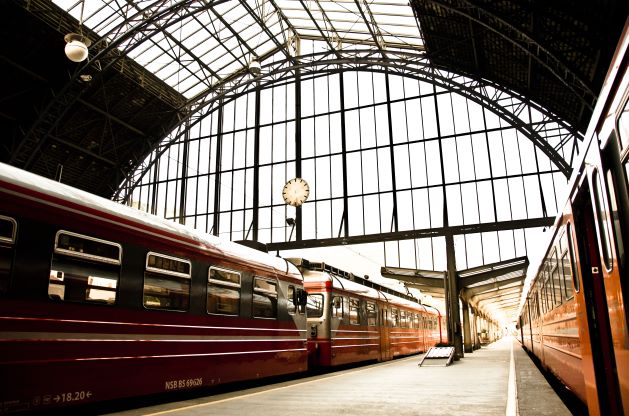
When booking train tickets for a business trip, questions may arise about how to choose the right type of carriage and which class of service on the train is better. To designate different types of cars and classes of service, Russian Railways uses combinations of numbers and letters. For example, you can find designations like 1A or 2B.
The range of amenities and services depends on the type of carriage. Thus, when purchasing a ticket, you can choose the seat that suits you in the desired type of carriage. In this article we will analyze the most common types of railway cars of passenger trains on Russian Railways, as well as classes of service.
Sitting cars
In carriages of this type, each passenger has a separate chair or seat. Seated carriages are suitable for daytime travel over relatively short distances, although sometimes tickets for seated carriages are sold for longer distances.
For example, in the interregional “Sapsan” and “Strizh” only seats are available; this type of ticket is also sold for trains that run within the region or between neighboring regions.
Depending on the class of service, seated cars can be marked 1C, 2C, 3C, 1R, 1Zh, 2Zh, 3O, 3B and so on, where the number indicates the level of comfort, and the letter reflects the features of the car (for example, are animals allowed, air conditioning, etc.)
Small class cars
A reserved seat is an open-type passenger carriage in which passengers have available places to sleep. This is the most budget travel option for long distances. Typically, top and bottom shelves in the unit and side shelves are available.
Reserve-class cars are usually designated by the number 3. The letter designations indicate the features of the car, for example:
3D – air-conditioned carriage, animals can be transported.
3L – a carriage without air conditioning and a dry closet, animals cannot be transported.
3E – carriage with air conditioning and dry closet, animals cannot be transported.
Compartment cars
Coupe is one of the most popular types of carriages, as it represents the optimal ratio of comfort and price. As a rule, such a carriage has eight or nine compartments isolated from each other, with four seats each. Therefore, travel in a compartment is more comfortable: extraneous noise does not interfere, and personal belongings are more secure.
Cars of this type are usually marked with the number 2 (second class). Services in a compartment car may include meals, transportation of animals, a safe, and so on. Here are some examples of markings:
2E – compartment with air conditioning, the price includes meals, newspapers and a hygiene kit. Pets are also allowed.
2K – there is air conditioning and a dry closet, pets are allowed, other services for an additional fee.
2D – the presence of air conditioning and a dry closet is not required, transportation of animals is not allowed, other services are for an additional fee.
Luxury and SV carriages
The most comfortable for travel are luxury and SV cars (sleeping cars). In carriages of this type, each compartment has two berths, both of which are located below. Air conditioning is always installed in the SV, and there is often a button to call the conductor.
Luxury and SV carriages are designated by the number 1 (first class). Services in luxury carriages may include meals, drinks, TV in the compartment, amenity kits, newspapers and so on. Examples of markings:
1B — business class, compartment for one adult passenger. The price includes food, drinks, hygiene kit, newspapers, pets are also allowed.
1E – conditions and range of services are the same as in business class, but you don’t have to buy the entire compartment.
1U – first class comfort level, pets allowed, other services for an additional fee. More details about the marking of various types of cars can be read at the link: class of service on Russian Railways trains decoding.

